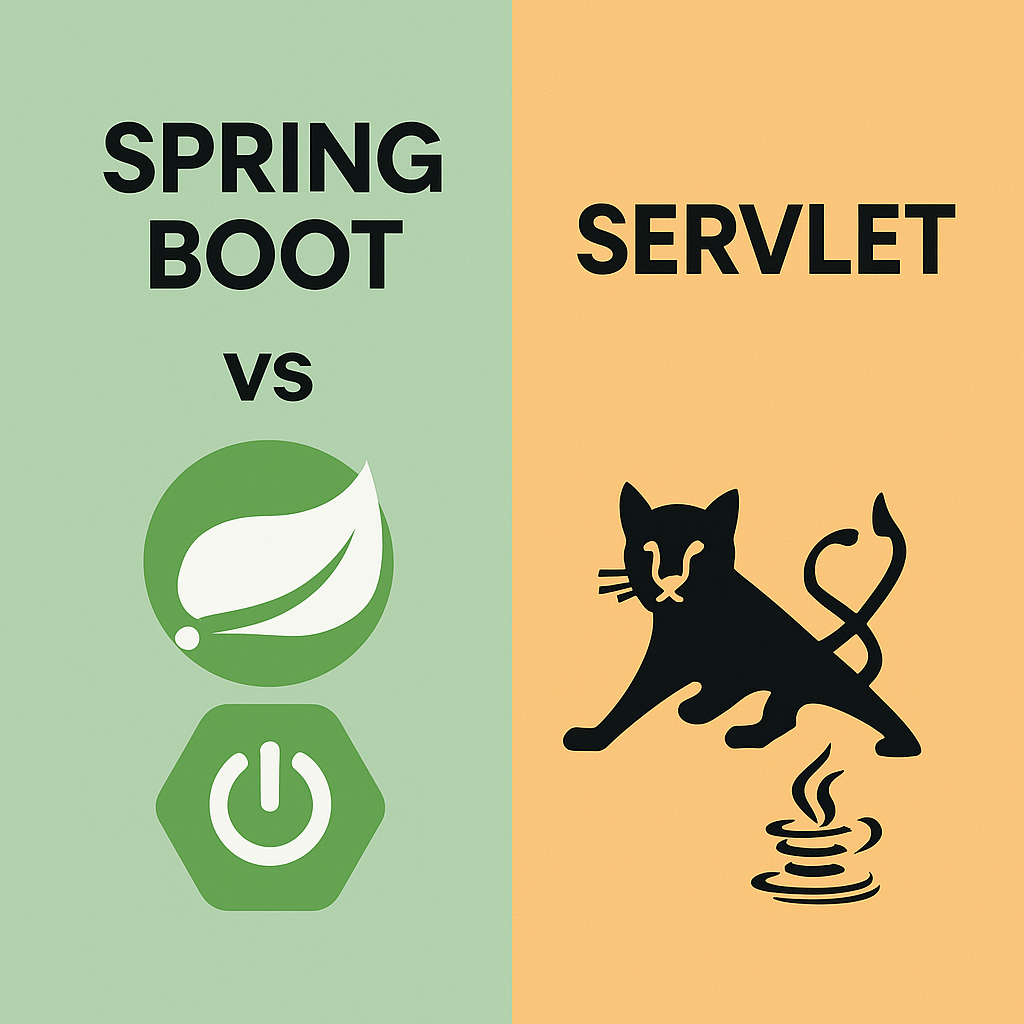If you’ve worked with Java web development, you’ve likely come across Servlets — the old-school way of building web apps. But today, Spring Boot has become the go-to framework. Why? 🤔 Let’s break it down with some easy examples, comparisons, and emoji-powered explanations!
🧠 What is a Servlet?
Servlets are Java classes that handle requests and responses on a web server. Imagine them as:
🧑🍳 A chef who takes your order (HTTP request), cooks your food (processes data), and serves it back (HTTP response).
Here’s a basic Servlet:
javaCopyEdit@WebServlet("/hello")
public class HelloServlet extends HttpServlet {
protected void doGet(HttpServletRequest request, HttpServletResponse response)
throws ServletException, IOException {
response.getWriter().write("Hello, World!");
}
}
✅ Pros of Servlets:
- 👍 Direct control over requests/responses.
- 🛠️ Lightweight, no external libraries needed.
- 💡 Good for learning how web requests work.
❌ Cons of Servlets:
- 🧱 Too much boilerplate code.
- 🚫 Hard to scale for big apps.
- 🔄 Manual configuration is painful.
- 😵 Tough to test and maintain.
🌱 What is Spring Boot?
Spring Boot is a modern, opinionated framework built on top of Spring, which simplifies Java web development.
🚗 Think of it as upgrading from a manual car (Servlets) to an automatic car with GPS, AC, and a music system (Spring Boot)!
Here’s a basic Spring Boot example:
javaCopyEdit@RestController
public class HelloController {
@GetMapping("/hello")
public String sayHello() {
return "Hello, World!";
}
}
And it runs with just one main class:
javaCopyEdit@SpringBootApplication
public class MyApp {
public static void main(String[] args) {
SpringApplication.run(MyApp.class, args);
}
}
✅ Pros of Spring Boot:
- ⚡ Rapid development (less boilerplate).
- 🧠 Auto-configuration of dependencies.
- 🧪 Easy to test.
- 🌐 Built-in web server (no need for external Tomcat).
- 📦 Easily connect with databases, REST APIs, etc.
❌ Cons of Spring Boot:
- 🐘 Slightly heavier (more memory).
- 🧰 Hides complexity (can confuse beginners).
- 🧵 May include unused features if not configured properly.
🤜🤛 Servlet vs Spring Boot – Real World Example
Let’s say you’re building a Student Management System 🎓.
In Servlets:
- You manually handle every request.
- Write HTML using
PrintWriter(😩). - Manually manage sessions and database connections.
javaCopyEdit// PrintWriter HTML code 🙄
response.getWriter().write("<html><body><h1>Student Added!</h1></body></html>");
In Spring Boot:
- Use annotations like
@RestController,@GetMapping. - Automatically return JSON or HTML.
- Easily integrate with databases using Spring Data JPA.
javaCopyEdit// Just return a Java object, Spring handles the rest!
@GetMapping("/students")
public List<Student> getAllStudents() {
return studentRepository.findAll();
}
📊 Comparison Table
| Feature | Servlet | Spring Boot |
|---|---|---|
| Setup Complexity | ⚙️ Manual, verbose | 🚀 Auto-configured, simple |
| Development Speed | 🐢 Slow | ⚡ Fast |
| Code Length | 📜 Long | ✂️ Short |
| Testing | 😵 Difficult | 🧪 Easy with Spring Test |
| Scalability | 🚧 Limited | 🏗️ Highly scalable |
| Learning Curve | 📘 Simple at start | 🧠 Easy with basics, deep features later |
💡 When to Use What?
| Situation | Recommendation |
|---|---|
| 🧪 Learning Web Basics | Use Servlets to understand request-response |
| 🏢 Building Real Projects | Use Spring Boot for faster, modern apps |
| 🧬 Need Full Control | Servlets (rare nowadays) |
| 🚀 Want Quick Delivery | Spring Boot (default choice today) |
🧾 Final Thoughts
Servlets paved the way for Java web apps, but Spring Boot has taken over with its simplicity, power, and flexibility. Unless you’re doing a university assignment or exploring low-level web mechanisms, Spring Boot is the better choice for modern development 💻.
✨ Think of Servlets as the foundation. Spring Boot? It’s the fully built smart home 🏡.
🙋♂️ Want to try Spring Boot?
Start with https://start.spring.io — generate your project in seconds and code like a pro!


